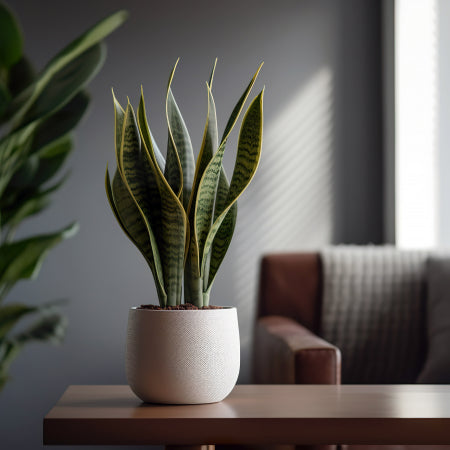Common Problems and Solutions for Philodendron Plants
The Philodendron is known for being one of the most resilient and easy-to-care-for tropical houseplants. This adaptable plant often signals when something is wrong, making it easier for you to adjust your care routine. Here, we'll look into the common issues that philodendrons face and provide solutions to keep your plant healthy and thriving.
1. Drooping Leaves
Drooping leaves are a common sign that something is amiss with your philodendron. This issue can stem from several factors:
- Over-fertilization: Excessive fertilizing can lead to a buildup of chemicals in the soil, damaging the plant’s roots and causing drooping leaves with brown tips. To remedy this, fertilize your philodendron only once a month during the growing season and every six weeks in the winter. Always dilute the fertilizer to prevent over-fertilization.
- Underwatering: If a philodendron doesn't receive enough water, its leaves will droop and turn yellow with brown edges. Water your plant thoroughly, allowing the top third of the soil to dry out between waterings.
- Overwatering: Overwatering can suffocate the roots and lead to root rot, causing the leaves to droop and yellow. Ensure your plant’s pot has adequate drainage and reduce watering frequency. Look for water-filled blisters (edema) on the leaves as a sign of overwatering.
- Lack of Light: Philodendrons need bright, indirect light. If your plant isn't getting enough light, its growth will slow, and it may become leggy. Move it to a sunnier spot or use a grow light if necessary.
- Cold Temperatures: Philodendrons are sensitive to cold drafts and temperatures below 12°C. Move your plant away from cold windows and air conditioning vents to prevent drooping leaves.
2. Yellow Leaves
Yellow leaves can indicate overwatering, underwatering, or inadequate lighting:
- Overwatering: Ensure the soil is well-draining and allow it to dry out between waterings.
- Underwatering: Water thoroughly when the top inch of soil is dry.
- Lighting: Provide bright, indirect light and avoid direct sunlight.
3. Brown Leaf Tips
Brown tips on philodendron leaves are often caused by low humidity, underwatering, or exposure to drafts. Increase humidity by misting the leaves, using a humidifier, or placing a water tray nearby. Ensure consistent watering and protect the plant from drafts.
4. Pests
Philodendrons can attract pests like spider mites, aphids, and mealybugs:
- Spider Mites: Look for fine webbing and use a water-neem oil mixture to spray affected areas.
- Aphids: Spray with a water-dish soap solution and rinse thoroughly.
- Mealybugs: Dab with rubbing alcohol using a cotton swab.
5. Leggy Growth
Leggy growth occurs when the plant isn't getting enough light. Move your philodendron to a brighter location or use a grow light to encourage healthier, fuller growth.
6. Root Rot
Root rot is caused by overwatering and poorly draining soil. Trim away affected roots, repot in well-draining soil, and adjust your watering routine.
7. Iron Deficiency
Yellow veins with green leaves can indicate an iron deficiency. Use a balanced, water-soluble fertilizer and ensure the soil pH is slightly acidic (5.5 to 6.5).
By identifying the common problems associated with the plant and implementing the required solutions, we can make sure that our Philodendron plants remain in a healthy condition. Follow the above few solutions for your problems and enjoy indoor gardening.







